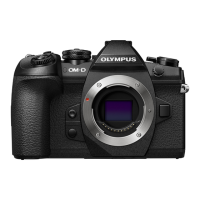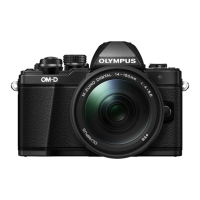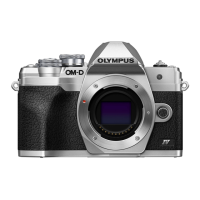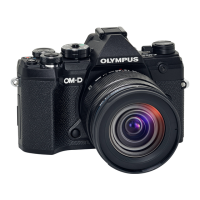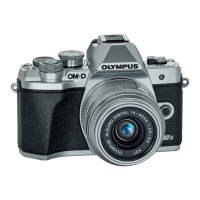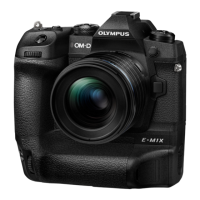30
EN
Shooting
2
Noise in images
While shooting at slow shutter speeds, noise may appear on screen. These phenomena
occur when the temperature rises in the image pickup device or image pickup device
internal drive circuit, causing current to be generated in those sections of the image pickup
device that are not normally exposed to light. This can also occur when shooting with a
high ISO setting in a high-temperature environment. To reduce this noise, the camera
activates the noise reduction function. g [Noise Reduct.] (P. 118)
Shooting with long exposure time ( BULB/ LIVE TIME)
You can use the BULB/LIVE TIME function for shooting scenes that require long
exposure such as night landscapes and fi reworks. In M mode, set the shutter speed to
[BULB] or [LIVE TIME].
Bulb photography
(BULB):
The shutter remains open while the shutter button is pressed.
The exposure ends when the shutter button is released.
Time photography
(LIVE TIME):
The exposure begins when the shutter button is pressed all the
way down. To end the exposure, press the shutter button all the
way down again.
• During bulb or time photography, the screen brightness changes automatically. g [Bulb/
Time Monitor] (P. 118)
• When using [LIVE TIME], the progress of the exposure will be displayed in the monitor
during shooting. The display can also be refreshed by pressing the shutter button halfway.
• [Live Bulb] (P. 118) can be used to display the image exposure during bulb photography.
• [BULB] and [LIVE TIME] are not available at some ISO sensitivity settings.
• To reduce camera blur, mount the camera on a sturdy tripod and use a remote cable (P. 155).
• During shooting, there are limits on the settings for the following functions.
Sequential shooting, self-timer shooting, time lapse shooting, AE bracket shooting,
image stabilizer, fl ash bracketing, multiple exposure*, etc.
* When an option other than [Off] is selected for [Live Bulb] or [Live Time] (P. 118)
• [Image Stabilizer] (P. 53) turns off automatically.
Live composite photography (dark and light fi eld composite)
You can record a composite image from multiple shots while observing changes in
bright fl ashes of light, such as fi reworks and stars, without changing the brightness of
the background.
1
Set an exposure time to be the reference in [Composite Settings] (P. 118).
2
In M mode, set the shutter speed to [LIVECOMP].
• When the shutter speed is set to [LIVECOMP], you can display the [Composite
Settings] by pressing the MENU button.
3
Press the shutter button once to prepare for shooting.
• You can shoot when a message that indicates preparations are complete is displayed
in the monitor.
4
Press the shutter button.
• Live composite shooting begins. A composite image is displayed after each reference
exposure time, allowing you to observe changes in light.
• During composite shooting, the screen brightness changes automatically. g [Bulb/
Time Monitor] (P. 118)
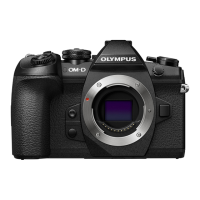
